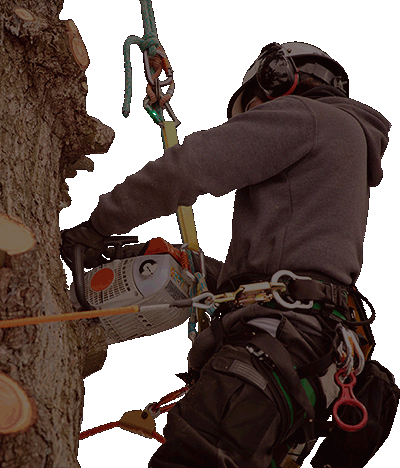
We love the look of our mature Spartanburg trees after a timely prune. They’re crisp, clean cut and ready to grow a healthy canopy.
But did you know that young, or newly planted trees, also like to be trimmed?
We had to share the knowledge - especially since a reader reached out to learn more about this. Specifically, he asked, “I planted a small Spartanburg tree that had multiple branches growing from the bottom area of the trunk. I wanted one main trunk, so I trimmed off two other branches. Did I hurt the tree?”
Below we dive into that question - along with how and why to shape young trees.
Should you prune young trees? Why?
New Spartanburg trees need help finding their way during their early years. Without your guidance, young Spartanburg trees can start to branch out in the wrong direction.
To wrangle their wild tendencies, prune them to provide a stable structure.
While forest Spartanburg trees compete for sunlight in close quarters, urban Spartanburg trees have plenty of light - sometimes all to themselves. Newly planted Spartanburg trees happily soak up the sun, causing multiple branches to grow that compete with one another to become the “leader.”
Despite having many strong branches, this makes the Spartanburg tree overall weaker. Without a defined trunk, Spartanburg trees lack the central frame needed to withstand storm damage. Plus, this could cause future structural issues, which can be costly to fix later.
How do you train young Spartanburg trees with pruning?
To make room for the leading limb, arborists select a central branch that’s free of damage, wounds or defects. Then, they identify competing stems to shorten or remove.
Riding your Spartanburg tree of rival branches is called structural or subordinate pruning. The goal is to encourage the tree’s leader to grow by trimming competing branches.
Training your young Spartanburg tree to grow the right way is simple and quick. Plus, this small step can often prevent expensive or damaging structural corrections later.
As always, before DIY-ing this project, consult your arborist to avoid severe or long-term damage from an improper cut. Rule of thumb: no more than 25% of the canopy should be removed at a time.
Any tips on when to prune young trees?
When you first plant a tree, trim away any broken, defected or damaged branches to prevent future issues.
Then, wait.
Two to three years after planting, you’ll see Spartanburg tree branches sprout into competition. When you see this happening, schedule your subordinate pruning with your local arborist.






